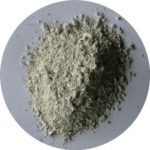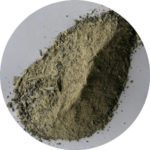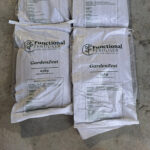As we see it, pastoral farming in this country is at a crossroads, with the path ahead uncharted territory.
Environmental considerations will be at the forefront of soon to be implemented regulations, and as with all major change, it’s likely that the pendulum will swing too far in favour of the environment before coming back to reality.
This is particularly so when currently all animals are seen as having an environmentally negative impact, and Overseer regards all nitrogen leaching as equivalent, whether applied, fixed naturally by clover or direct from the atmosphere.
Animals should not be regarded as having a negative impact. They should be seen as the catalyst that ensures carbon from the atmosphere is stored in the soil as humus. If that seems an outrageous claim, please view Alan Savory’s Ted Talk clip on desertification, available via our website www.functionalfertiliser.co.nz or www.esi.org.nz under Videos.
Animal Grazing is Necessary
Without grazing, much of New Zealand would rapidly revert to low fertility grasses, weeds including gorse, before reverting to scrub and eventually bush.
During that process climate change would rapidly accelerate, food supplies would dwindle and human survival would become increasingly tenuous, all within the next generation’s lifetime.
Removing sufficient atmospheric carbon dioxide to minimise climate change, based on current models, is only achievable by sequestering carbon in soil under grazed permanent pastures.
It is rapidly growing plants that have the greatest demand for carbon dioxide. It powers their growth and, because for at least 9 months of the year rotationally grazed pasture is actively growing, carbon dioxide is being removed.
Without grazing, plants rapidly reach maturity and stop growing. The actual grazing process encourages regrowth, and the treading action helps mix dung and dead grasses stimulating the biological activity necessary to incorporate it into the soil and store as humus.
What does Humus do?
Humus is what remains of organic matter after it has been fully digested by soil life, and it stays in the soil indefinitely.
To do this efficiently, thereby maximising pasture growth, it’s important that the nitrogen required is provided via clover not as bag N. Clovers fix nitrogen as a result of declining soil levels and therefore the supply and demand process naturally balances.
It’s important to bear in mind that pastoral soils contain between 5,000 and 15,000 kg/ha of nitrogen in the top 25cm, and it’s not the shortage of nitrogen, but the availability of it for plant uptake, that limits pasture growth.
Plant uptake is only a small fraction of the total soil held N, and most is recycled with only around 260kgN/ha annually being removed. Clovers in a well-managed sward can comfortably fix that amount of nitrogen, particularly when the soil conditions favour their growth.
Busting myths
The urea content of animal urine is extremely variable, with research from the 1970’s showing a range of 0.75% to 2.5%. Any model that has a fixed figure is distorting reality, and is therefore unreliable.
The notion that all the urea in urine stays concentrated in the area in which it is deposited is also false, with data from here and overseas showing that the soil/plant benefit from urine is likely to be 2 – 5 times larger than the actual area covered by it, depending on the size and shape of the urine spot.
The only reliable leaching loss figures, and these will again vary, are from the concentrations of Nitrate N in water taken from below grazed pastures. Trial work by Functional Fertiliser on a farm using only clover to create N showed a 70% reduction in Nitrate N compared to a neighbouring property applying urea regularly throughout the season.
Farmers are getting a raw deal from the current thinking, and the models under which regulation and future legislation are currently being formulated.
For a real improvement in soil quality and pasture growth It is essential that farmers make changes. This will require a rapid and significant reduction in the current 750,000 tonnes of urea applied annually.
Carbon and nitrogen are linked, and applied N essentially ‘burns’ carbon, releasing N for plant uptake. Too much N and soil carbon levels decrease.
What does Carbon do?
Carbon in the form of humus works as a filter, with the ability to store a significant portion of nutrient entering the soil. Soils with steadily increasing humus levels also have excellent physical structures, encouraging plant roots to fossick at greater depth, extracting nitrate and phosphorus before they reach groundwater.
Clover and Milk Urea
Another myth is that clover growth in pastures always causes a spike in milk urea levels. As logical as this seems it doesn’t have to be the case and here are the reasons why.
The concentration of nitrogen in plants, and therefore crude protein, are at their highest during the rapid growth phase. As the rate of growth declines with the onset of maturity most of the nitrates turn to full protein.
Therefore pastures not grazed until the end of the rapid growth phase contain less nitrogen. Thus less urea is deposited in urine by grazers, resulting in lower Nitrate N losses. This can be significant as pastures with higher levels of protein also contain more energy, and milk solid production and animal weight gains increase.
It’s a complex area however, as calculating protein by multiplying plant nitrogen levels by 6.25 leads to a flawed model, which leads to further miscalculations and regulations that will do little to improve water quality.
Stock Reductions are not the Answer
Animal numbers on Irish dairy farms have been restricted to 2 per hectare for a number of years. Urea usage has not changed during that time and consequently water quality has not improved.
Focusing on animal numbers shows a misunderstanding of the causes of unacceptably high levels of nutrients lost to groundwater.
The best way of sorting this issue is to put in place a sound soil fertility programme, limiting fertiliser nitrogen inputs to less than 30kg/ha annually. By grazing pastures at the end of the rapid growth phase the ideal number of animals, and optimum pasture covers, will quickly become apparent.
Rapid Improvement Happens
Farmers on the treadmill of ‘too many animals grazing pastures before maturity and applying nitrogen in an attempt to fill ever increasing feed deficits’ are understandably fearful of change.
Functional Fertilisers and their associated Farming Systems’ total nutrient programmes overcome the often discussed ‘transition phase’, of pasture production declining before it increases.
An increasing number of farmers making the change are discovering pasture growth increases almost immediately after the first application, and annual pasture performance lifts sustainably year on year.
The speed at which the grazing management tweaks necessary to maximise growth are introduced, is determined by each operator.
One of the most interesting comments made by farmers making the change is how quickly a ‘feel good’ factor kicks in as it becomes apparent that their farming future is secure, regardless of the stringency of environmental sustainability regulations.




